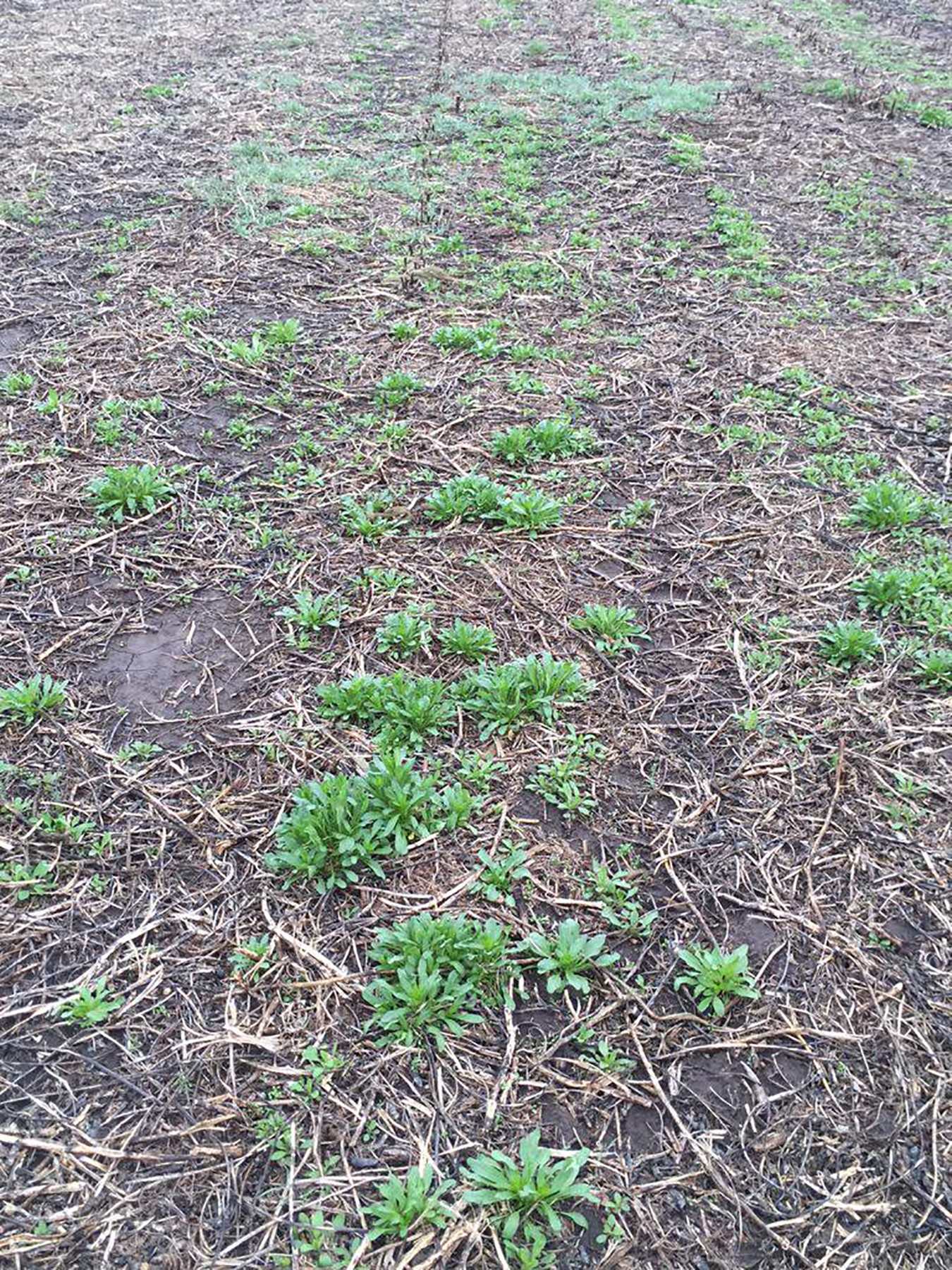A pre-plant burndown is your greatest opportunity to get ahead of winter annual and perennial weeds before in-crop options become limited.
Managing competitive weeds in the pre-plant, pre-emerge period is critical to give plants their best start and maximize yield potential.
Pre-emerge and pre-plant burndown options make sound agronomic sense for cropping systems. This weed management approach is especially critical for farmers using conservation tillage, minimum tillage, no-till or zone tillage because it provides the cleanest start and best chance for the field to be weed-free, at least until the crop is established. A burndown strategy combined with residual control is also important in IP soybeans that have limited in-crop weed management options.
The basic burndown approach starts with glyphosate, a non-residual option to knock down weeds. Adding a residual active ingredient such as metribuzin or chlorimuron-ethyl Classic™ extends weed control, offers another effective mode of action, and buys the crop time to get established before competing with weeds for space, nutrients, moisture and sunlight.
Getting the timing right for the most effective burndown is key to overall weed control. Some growers like to wait until as many weeds have emerged as possible, and while that works for many, waiting too long can narrow application windows and affect product rates. Mike Cowborough, Field Crops Weed Management Specialist with the Ontario Ministry of Agriculture and Food recommends that, to optimize glyphosate performance, annual weeds should be sprayed when they are no larger than 10 cm (4”) tall.
Cowborough also recommends spraying between 8:00 am and 8:00 pm and says the best control often occurs when applications are made from noon until 6:00 pm. This assumes that environmental conditions aren’t favourable for off target drift at the time of application. Temperature also needs to be considered when it comes to application timing. For optimal herbicide activity, nighttime temperatures should not reach below 5oC. Nighttime temperatures below 5oC can impact product effectiveness on perennials.
Combining a burndown with residual weed control is the most effective approach, eliminating the need to wait for weeds to appear. An earlier weed control application can also help you manage your workload during the busy spring season, giving you a head-start to take action before weeds get out of control. Adding the residual weed control also provides you with the confidence to spray early and know that even though all the weeds haven’t emerged, you’ve got them under control.
Burndowns can also be used as a proactive problem weed management tool, especially when multiple effective modes of action are combined to reduce selection pressure for herbicide resistance. Glyphosate-resistant Canada fleabane is common in most fields, and it’s likely most farmers will need a plan to reduce the spread and control this problem weed. Tank-mixing glyphosate with products that provide other effective modes of action, like 2,4-D choline, Enlist™1, metribuzin, saflufenacil, dicamba are an effective tool against glyphosate-resistant fleabane. Make sure to only apply approved products for the trait system you are planting and always read and follow product label instructions for rates and tank mix options.

Source: https://fieldcropnews.com/2022/03/optimizing-the-performance-of-glyphosate-in-field-crops/





